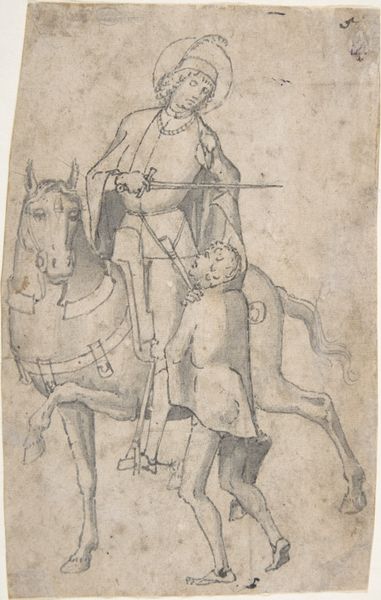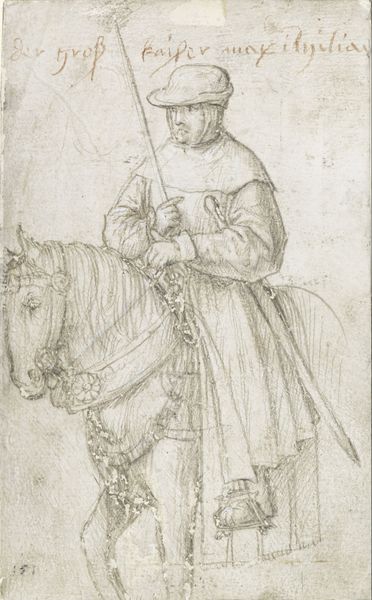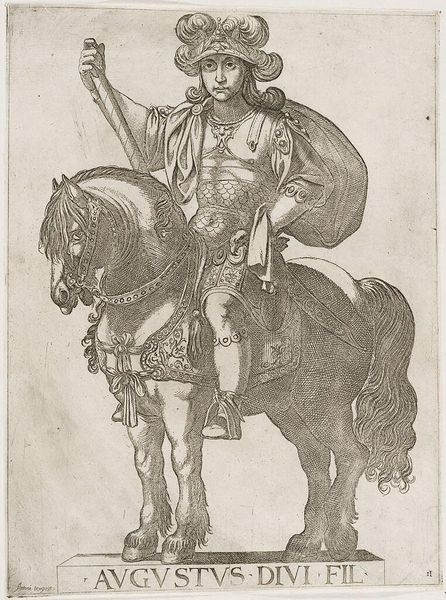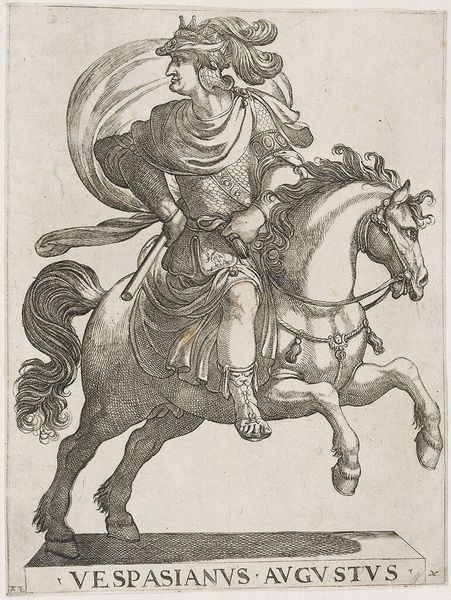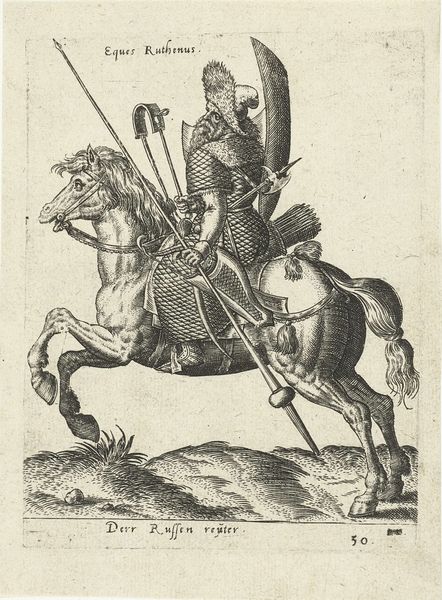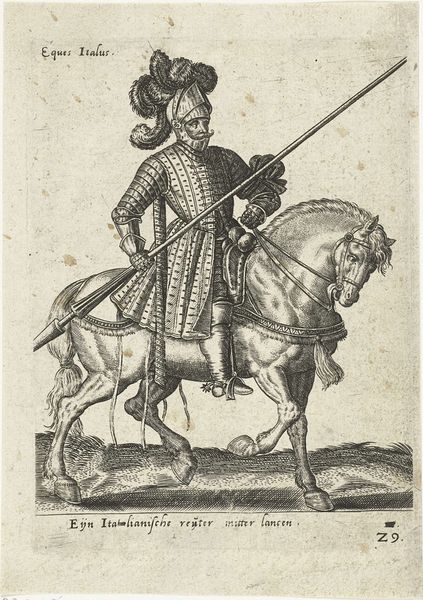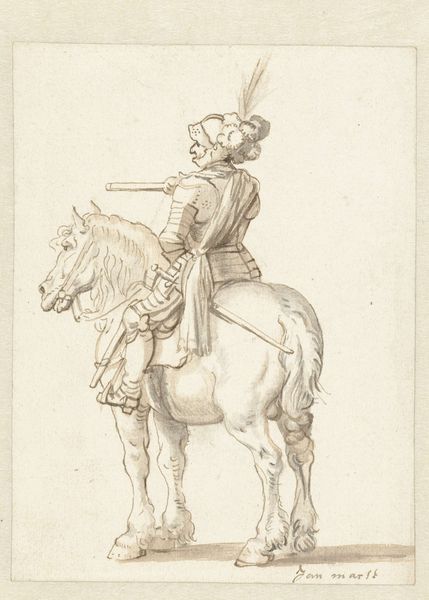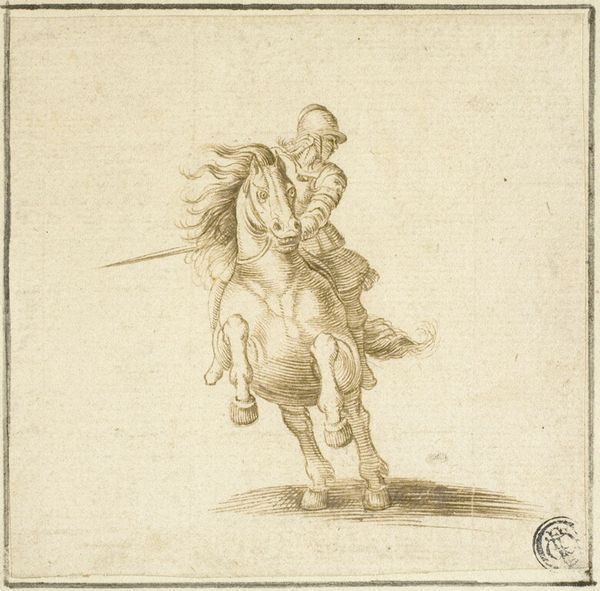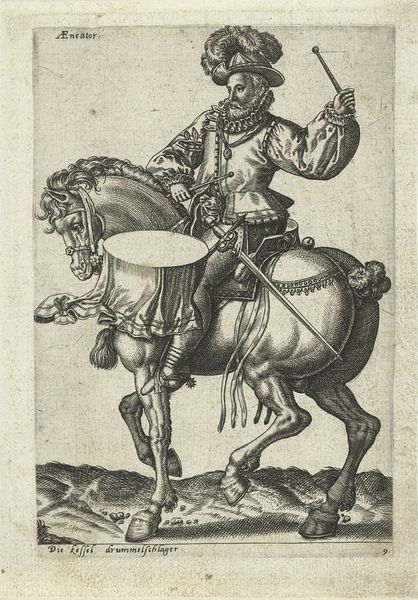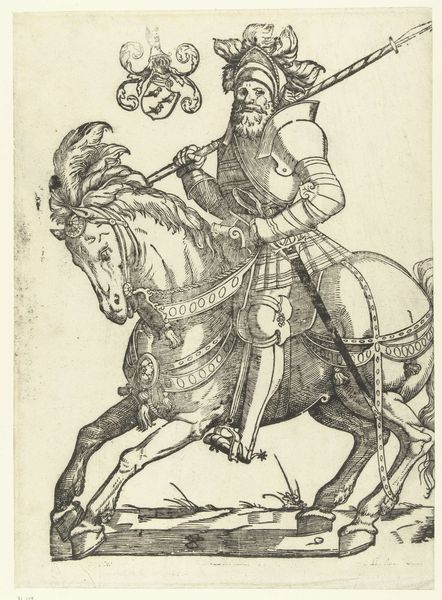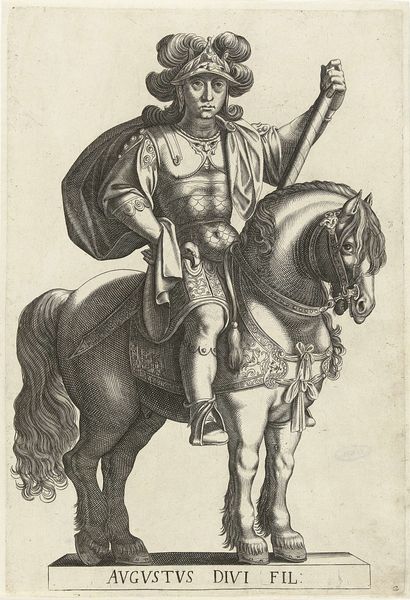
#
night
#
toned paper
#
light pencil work
#
pencil sketch
#
war
#
incomplete sketchy
#
charcoal drawing
#
possibly oil pastel
#
underpainting
#
detailed observational sketch
#
sketch
#
fantasy sketch
#
watercolor
Copyright: Public domain
Curator: Before us we have Albrecht Durer's "Knight on Horseback", a work that dates back to 1512 and is currently housed in the Biblioteca Ambrosiana in Milan. Editor: Immediately, I’m struck by the meticulous detail of the armour and the horse’s tack, juxtaposed against the sketch-like quality. It feels… both precise and ephemeral, solid and fleeting all at once. Curator: Indeed. The handling of materials here is very important; notice the toned paper he used. It's a quick preparatory sketch, perhaps using pencil and wash, likely meant to inform a larger painting or print, providing a ready-made ground. The suggestive contour lines imply form rather than defining it. It feels like a working drawing, almost a functional artifact. Editor: And how potent that suggestion is. Even unfinished, the knight evokes a very specific historical archetype, of courage and perhaps of brutality. The lance held aloft and the steed’s raised hoof communicate action, purpose. Doesn’t the iconography resonate powerfully, even in our time? Curator: Well, consider what warfare meant at the turn of the sixteenth century. A horse was an expensive piece of equipment; armor production and blacksmithing were highly specialized, localized crafts, crucial to urban centers. A knight on horseback in full battle array was less about personal valor than an illustration of social structures, almost industrial capacity, and power structures made material. Editor: But even detached from that immediate historical context, aren't these symbols legible today? The lone rider, armed and armored, represents the hero's journey, the readiness to confront adversity. Durer certainly understood how to translate complex cultural ideas through concentrated symbolism. Curator: Perhaps. I’m just pointing out that to read solely into the iconographic impact risks overlooking the context of making and commissioning and its effect on a particular historical society. Editor: I agree; those things are entwined. It's about layers of meaning. What remains remarkable to me is that a sketch can possess so much presence. Curator: Precisely; and thinking of presence as not merely an effect of imagery but tied to how material and labor become transformed into the drawing allows a richer and multifaceted insight. Editor: This makes me view sketches and drawings in a very new way. Thank you!
Comments
No comments
Be the first to comment and join the conversation on the ultimate creative platform.

